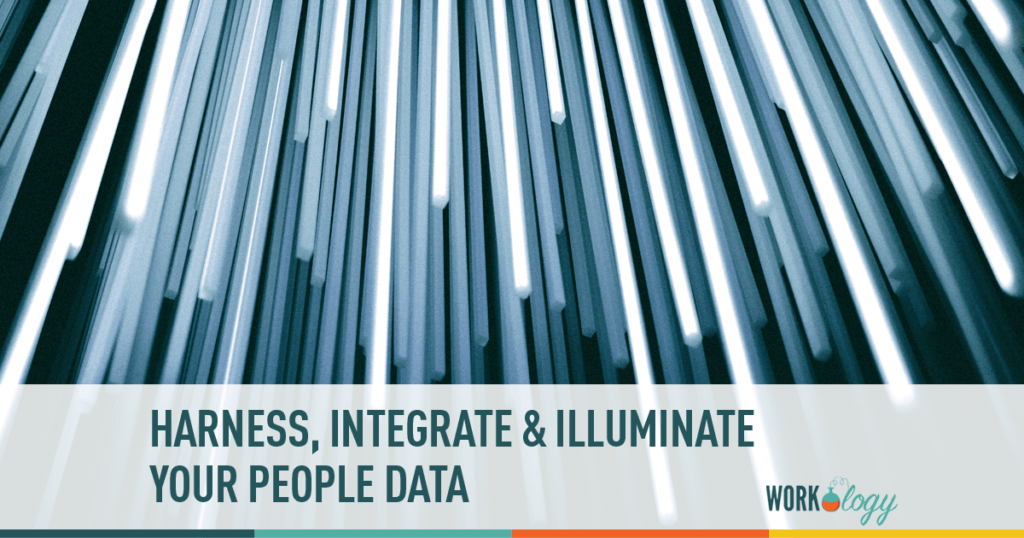This week on Blogging4Jobs, we are focusing on the theme Big Data sponsored by Jibe. Jibe provides cloud-based recruiting technology solutions that enable talent acquisition teams to strategically identify, attract and engage candidates. Join us April 10th 2014 at 3pm to talk Big Data on Twitter using the hashtag #BigDataHR and join our webinar, “What’s the Big Deal with Big Data in HR & Recruiting” on April 17th at 11a EST. Follow the week by bookmarking us!
Harness, Integrate & Illuminate Your People Data
We’ve been hearing a lot about big data lately. Feeling overwhelmed? Harnessing and analyzing people data can seem daunting. Often times data comes from multiple systems and is likely maintained by multiple departments in different locations – benefit data, payroll data, performance data, etc. With already stretched resources, it seems like a large undertaking to coordinate your data vendors and IT team to bring together all of your data, and keep it updated. Would you organization really miss a beat if you didn’t integrate your people data? Is it worth it? Trust me, yes; it’s substantially worth it in the short run and long run.
But let’s back up, what is People Data, anyway? People data can be defined as any information associated with your employee’s involvement in and interaction with the workplace. It includes all compensation, benefits, performance, recruitment, onboarding, training and absence data.
So, what is integrating your people data going to do for you and your organization? There are many advantages, but it fundamentally boils down to two broad benefits:
It helps you make better business decisions that affect your organization
Having your data integrated and organized allows you to see the big picture, and the small picture. Analyze your data and see trends, get the big picture view – how many FMLA leaves turn into disability leave, what are the top categories of benefits utilization that are the most costly? Get to know these answers.
Which brings us to the small picture, integrating your people data gives you the ability to run reports and slice and dice your data with precision focus so you can examine different demographic populations, locations, dates of time, etc.
When you can understand, control and see your people data, you can make better business decisions that lead to cost savings within employee benefit programs. This cost savings can be measured and the results can be presented to the leadership team, further proving how important HR is in contributing to increased company performance and improving the bottom line.
It makes you more agile
Having your data integrated and organized is empowering. Not only are you making educated business decisions based on solid data, but having your data organized helps you respond to changing business needs. Maybe you are acquiring a new company and need to integrate their data with yours. Maybe you need to change vendors and can do so easily because your data isn’t disorganized and siloed. Additionally, it leads to better quality data. When everything is integrated and there’s a streamlined process, there’s more of a chance that you’ll catch errors if there’s an issue.
It will also lighten your workload. You can run reports on your integrated data and get answers immediately. Gone are the days when you have to call your data vendor, submit a request and wait for an analyst to examine your data. Instead, you get to be the data analyst. It’ll also help you get out in front of any data projects down the road that require data integration, because wait, it’s already done!
Avoid people data unconsciousness. There’s a wealth of data out there that can lead to valuable information. You just need to know where to find it, how to manage it, and choose a data partner who can guide you in that process.









